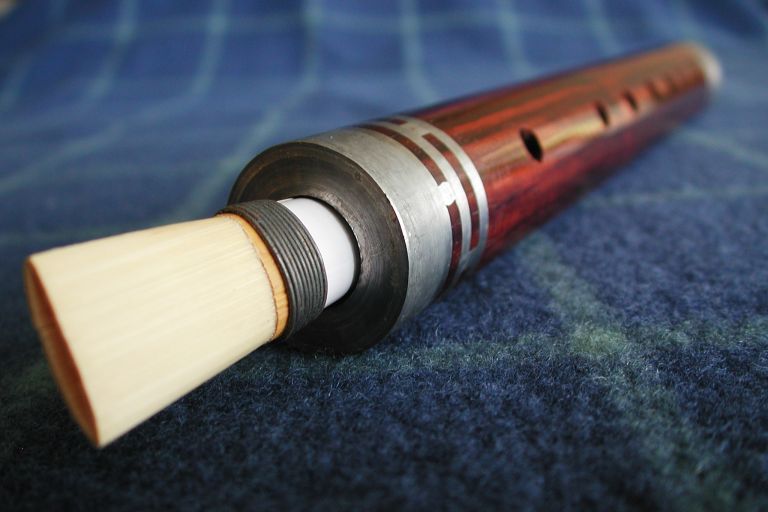
|
Chinese Musical Instruments - Instrument 26
Guan - Wind Instrument The guan was known as bili in ancient times. It was brought to China from Qiuci (a region in today's Xinjiang province) around the Sui Dynasty. The bili was a very important instrument in the Nine and Ten Genres of Music in the Sui and Tang Dynasties, hence it was called the "Head Guan." The instrument can be found all over China, and is mainly found in folk guchui (drum and wind) music and Buddhist and Taoist music. Generally a single guan is used, but sometimes two may also be used in performances. The tone quality of guanzi is expansive, whereas that of houguan carries strong nasal During the Sui and Tang period (581-907) the bili was adopted commonly in court orchestras. In the music teaching institutes of the Song dynasty (960 to 1279) a section for the bili was set up. Because of its frequent leading position in the orchestra, it was also termed as touguan (the first oboe). The type used in the folk music after the Song dynasty was mostly made of bamboo, and later of red sandal, and bound with metal rings or tin hoops on both endstimber. |
| Guan - Wind Instrument | |
| ⇦ Back to Instrument 25 Return to Thumbs Page 4 On to Instrument 27 ⇨ | |